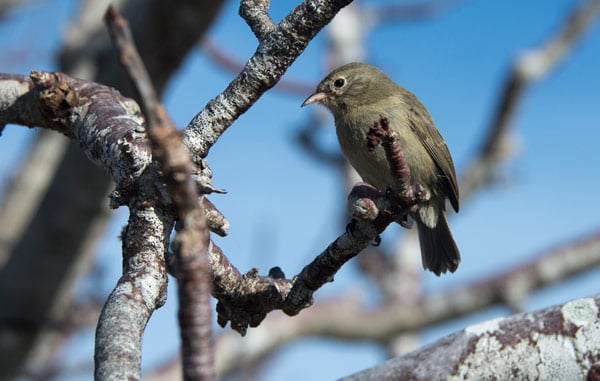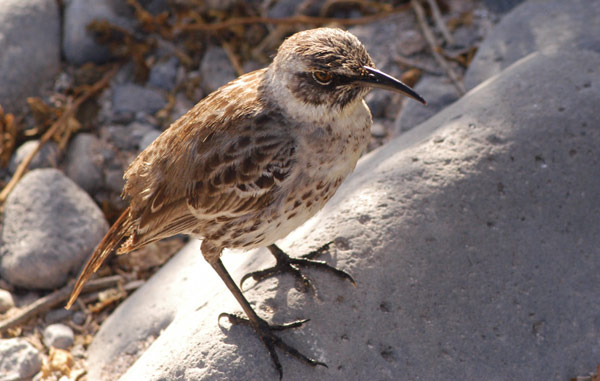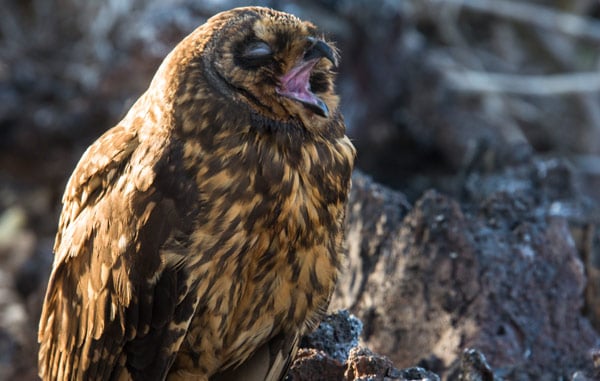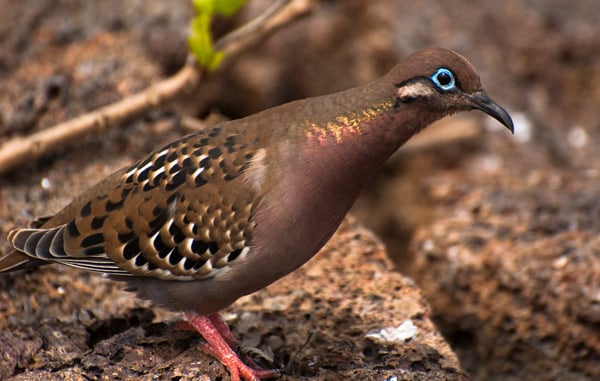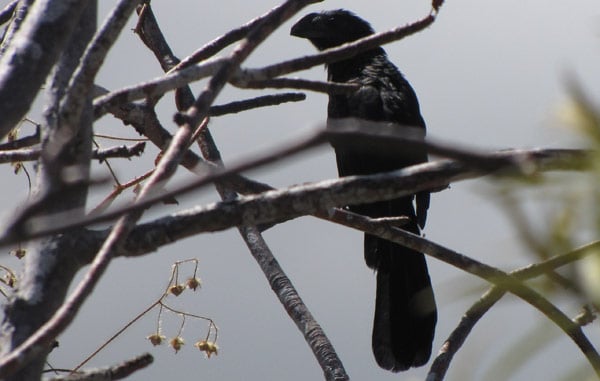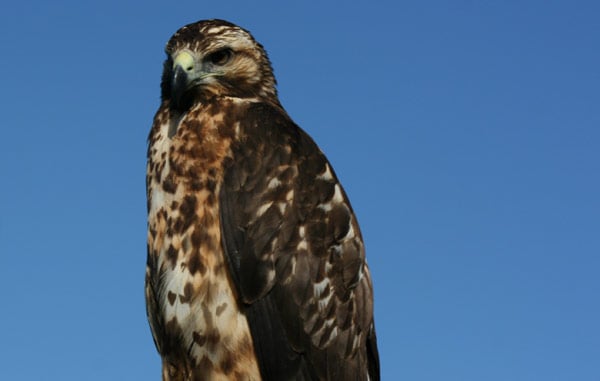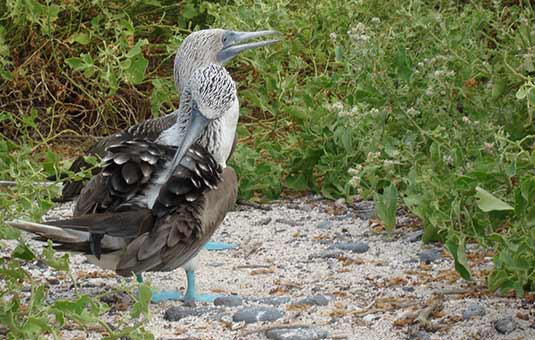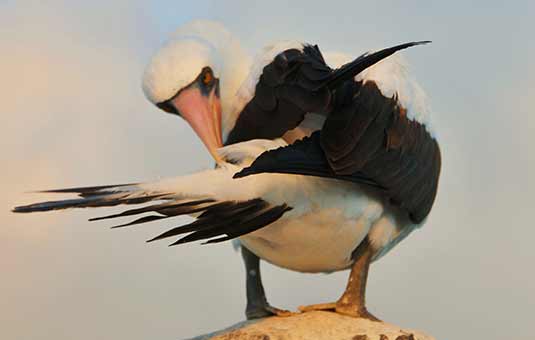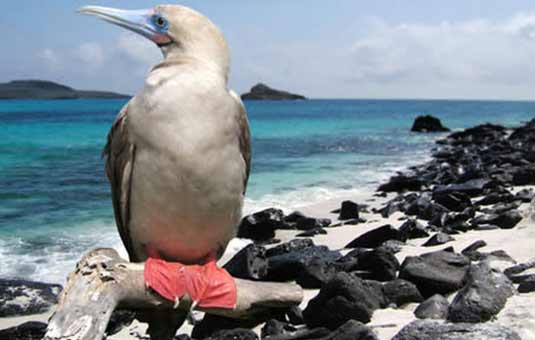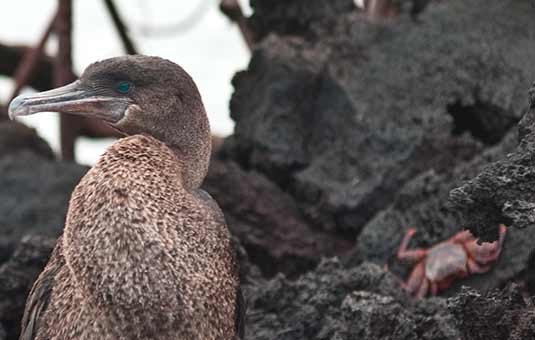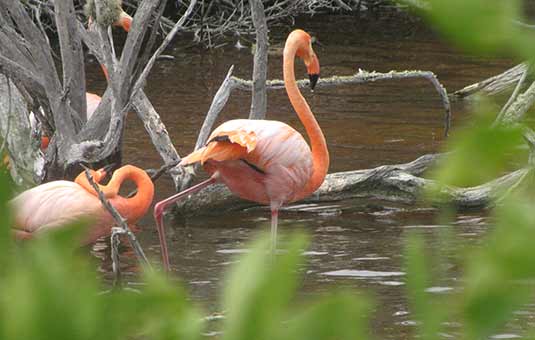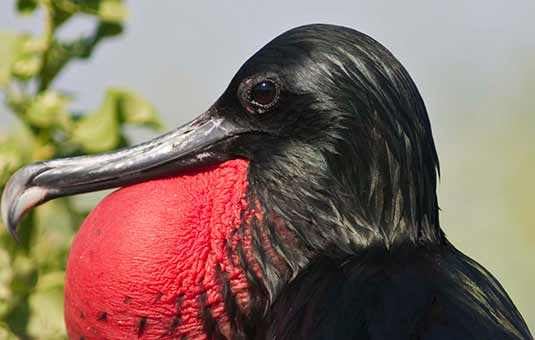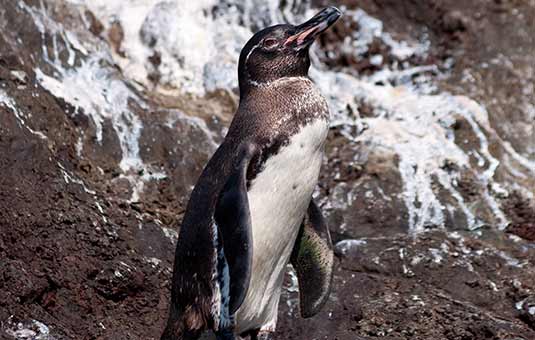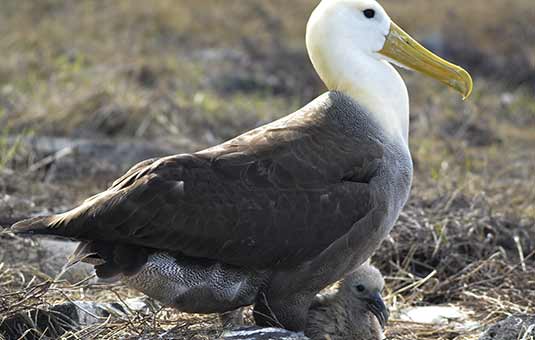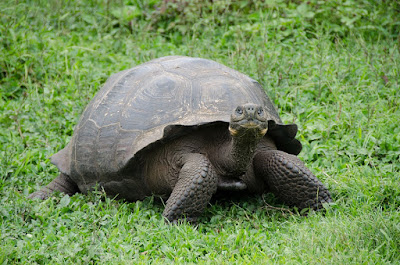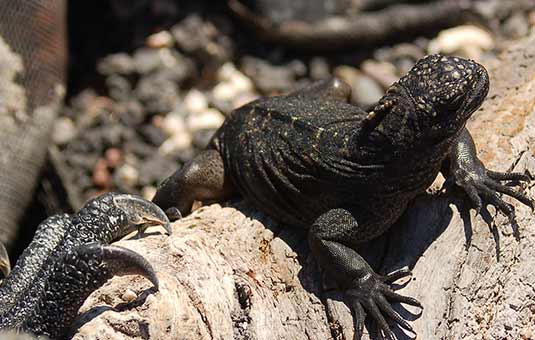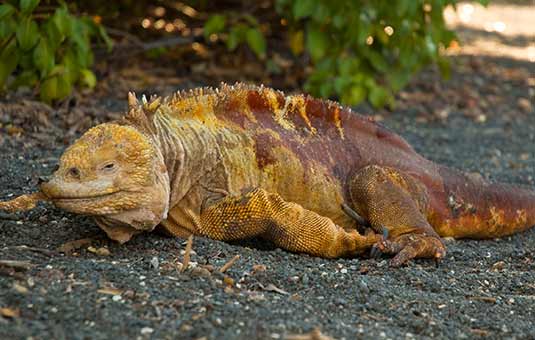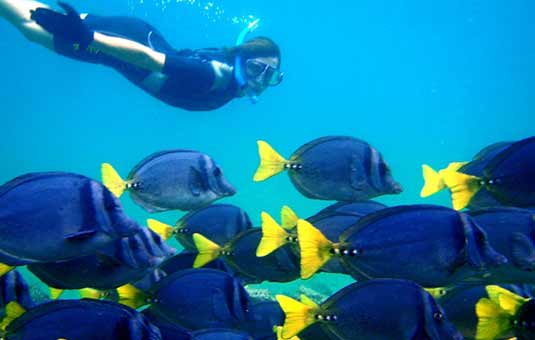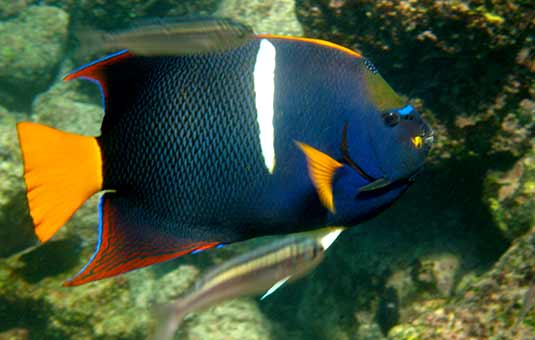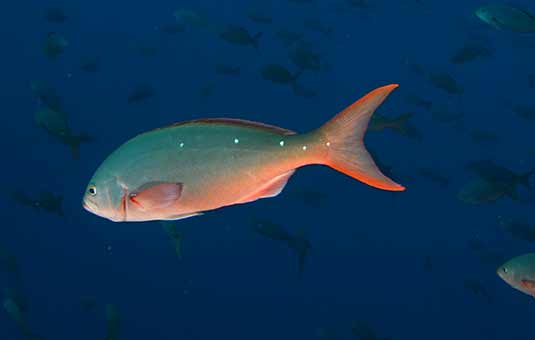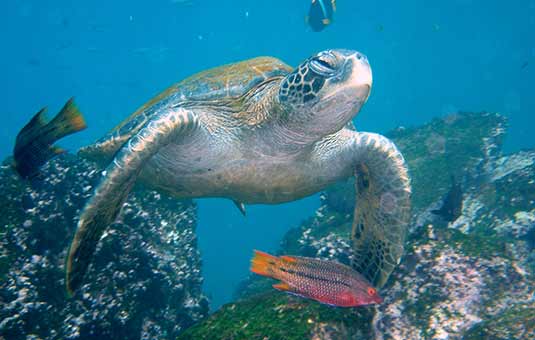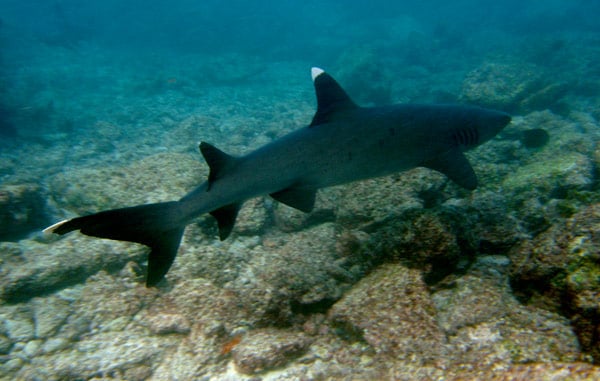The living museum that is Galapagos Islands is an archipelago located in the Republic of Ecuador. It consists of 19 main islands but only five of them are inhabited. There is no record found on the origin of the Galapagos Islands but a certain factor that contributed to the formation of this UNESCO World Heritage site is the continuous seismic and volcanic activity of the Nazca plate, a major tectonic plate, where it is located. It is also located on top of the Galapagos hot spot where a mantle plume melts the Earth’s crust resulting in the formation of volcanoes.
A vast diversity of species thrives in the Galapagos Island and in the marine reserve that surrounds it. It is home to a large number of species. Due to its location being in the convergence of three ocean currents, various “unusual species” have found existence on the island which can be seen nowhere else in the Earth. In fact, the rich biodiversity of the Islands became Charles Darwin’s benchmark for his “Theory of Evolution through Natural Selection” which he formulated following his one month visit to the island in the year 1835.
Wildlife in The Galapagos Islands
The animals that live in the Galapagos do not survive by diversifying but by adapting and developing traits to suit the condition they live in, hence the birth of various rare species. Because of the Islands’ extreme remoteness, the animals that live here do not have a natural fear for human, which makes an up close and personal encounter with different species possible, or even a norm.
GALAPAGOS LAND BIRDS
There is abundant bird life in the Galapagos because birds can easily fly to and from Galapagos. Smaller bird species are also carried by strong storms to Galapagos.
Finches
- Small birds with small, pointy beaks
- Low-flying
- Eats seeds, insects,
- 13 species found all over the archipelago
- Can be seen all year round
Mockingbirds
- Larger than finches
- Some have curved beaks, some have straight beaks
- Four different species found on most islands, at the shoreline
- Salt-and-pepper color
Short-eared Owls
- Have clumps of feathers that look like ears
- Can be found anywhere on the Island but is best seen in Genovesa Island
- They survive on small mammals like mice and rat and small birds and reptiles
- Most active at night and in the early morning
Galapagos Dove
- Can be found in rocky areas of the archipelago
- Reddish brown in color and has blue circles around their eyes
- Long, downward, curved beaks
- They feed on insects and seeds and fruits from the ground
- Attractive but shy
- Prefer the arid lowlands
Smooth Billed Ani
- Large, black bird
- Came to the island in the 1960s
- Feeds on insects and small reptiles
Galapagos Hawks
- Before humans settled in the archipelago, the Galapagos hawk was considered to be the island’s top predator
- They feed on small birds, mice, rats and reptiles, carrions, dead goats and sometimes on small Galapagos tortoises
- They hunt in small groups
- Tough, swift and strong
- They can fly up to 200 meters
- They can be found almost all over the archipelago except on the islands of Floreana, San Cristobal, Baltra, Daphne, and Seymour.
GALAPAGOS SEABIRDS
Blue-footed Booby
- A favorite among Galapagos visitors because of the cuteness
- Nests in open spots and walking trails
- The male booby does a courtship dance to attract mates
- The bluer the feet of the male booby, the more attractive the mate
- Mating season is usually in the month of March
- Booby chicks need five to six months before they can fly
- Can be seen all year round at the shoreline of most islands
Nazca Booby
- The largest specie of Galapagos boobies
- Best seen in the islands of Española, Genovesa, and Floreana
- Can be seen all year round
Red-footed Booby
- Can go up to 93 miles to hunt for food
- Can be found all year round in the islands of Wolf, Floreana, Genovesa, Darwin, and San Cristobal
Flightless Cormorant
- The only cormorant in the world that cannot fly
- One of the world’s rarest birds
- Nests in the coasts of Fernandina and Isabela Islands
Greater Flamingo
- Feed on tiny crustaceans
- Lives in brackish, salty waters
- Only a few hundred can be seen in the islands of the islands of Floreana, Santiago, Isabela, Rabida, and Sta. Cruz
Frigatebird
- Steals food in mid-air from other bird species
- Can be found all year round in the islands of North Seymour, Isabela, Floreana, San Cristobal and Genovesa.
Galapagos Penguins
- Designed to live in arctic conditions, the Galapagos penguins have learned to adapt to living at the equator.
- Found all year round in the islands of Fernandina and Isabela.
Waved Albatross
- One of the world’s rarest birds
- A large bird with a combination of brown, yellow, and white in color
- With bright, yellow bills
- Feeds on squid and fish
- Can fly for days, but waddles weakly on land
- Can be found only on the island of Español
- Leaves the islands by December and return by April
GALAPAGOS REPTILES
Reptiles thrive in Galapagos Islands. It is widely believed that these reptiles arrived on the island by chance, clinging to wood and masses of vegetation that were set adrift from other lands. Over the years, these reptiles have transformed so much that they no longer look like their ancestors who first came to the island.
Giant Tortoises
- Most famous of all Galapagos species
- Gentle, massive creatures
- Herbivores
- Lives in the cool highlands
- Once became extinct because of sailors and pirates who carried them off as food
- The famous Galapagos Tortoise named Lonesome George is the last individual of the Pinta Island species and can be seen at the Charles Darwin Research Station in the Island
- They can be seen all year round at the Isabela Island, Pinzon Island, La Pinta Island, Santiago Island, Santa Cruz Island, San Cristobal Island and Española Island
- The largest tortoise weighs over 400kg and measures 1.8 meters.
Marine Iguana
- Feeds off underwater algae
- Common throughout the island all year round
- Male iguanas fight over mates by butting heads
- Endemic to Galapagos Islands
- They are sometimes called “Christmas Iguanas” because of their green and red color
Land Iguana
- These iguanas resemble their ancestors in appearance and diet more than their marine counterparts
- Bright yellow in color
- They feed on cacti and fruits
- There is a recent discovery of Pink Iguanas in one of the volcanos in the Isabela Island
Lava Lizard
- Can grow up to a foot long
- Feeds on insects
- The largest of 28 species is called Española
- Seven species are endemic to Galapagos
- They are abundant all over the archipelago, all year round
- The four species of Snakes endemic to Galapagos are called Hood Racer, Banded Galapagos, Striped Galapagos, and Galapagos Racer
- Small and harmless
- Brownish
- They eat small iguanas and lizards, and nesting birds
GALAPAGOS MARINE ANIMALS
One of the activities offered when you go to the Galapagos is the chance to dive or snorkel to experience the rich marine life on the Island.
The most common fishes found in the shallow waters of the Galapagos are the following:
Yellow-tailed Surgeon Fish
King Angelfish
Sergeant-major
Parrot Fish
There are also a lot of other sea creatures that call Galapagos their home.
Green Sea Turtle
- Gentle giants
- Feed on seaweed, algae, and jellyfish
- They can be found on most islands in the archipelago
- Only the females leave the sea to nest and lay eggs on the shores of the islands
White-tipped Reef Shark
- Small to medium sized with white tips on the tail fins and dorsal
- Harmless and inoffensive
- Swims away from humans
- Other species are the Galapagos Shark, Hammerhead Shark, and the Whale Shark
Rays
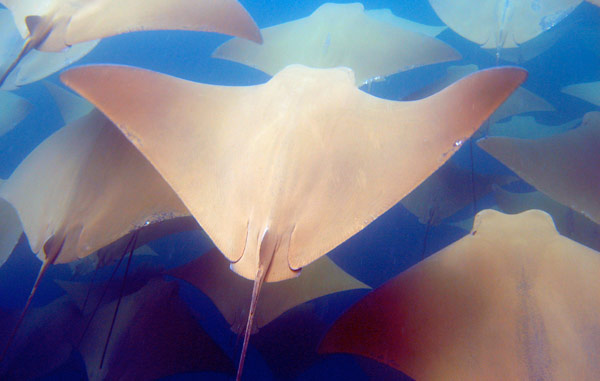 |
| The Golden Cownose Ray |
- The four of species of ray that can be seen in the Islands are the Manta Rays, Sting Rays, Golden Cownose Ray, and the Spotted Eagle Ray.
- Lives in sandy bottoms with a few rocks
- Inoffensive
- Their defense mechanism is the stinger found on their tails
- The biggest of the four is the Manta Ray who feeds on plankton
Sea Lion
Crabs
Octopi
Galapagos Penguin
Galapagos Penguin
GALAPAGOS MAMMALS
Like the Galapagos reptiles, it is believed that these Mammals came to the Islands by chance, being washed-off from the mainland while clinging to floating materials.
Galapagos Sea Lions and Fur Sea Lions
- Feeds on sardines
- Can travel up to 15km from the coast to hunt for food
- Can be seen all year round
Baleen Whales
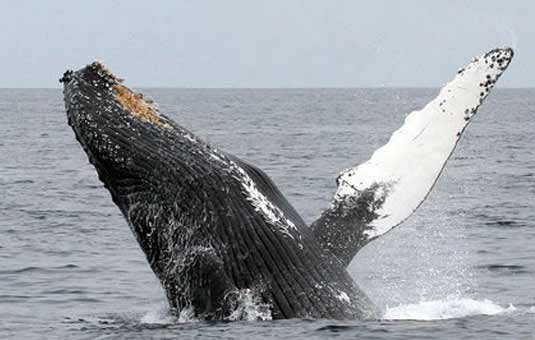 |
| The Humpback Whale |
- The biggest mammal on earth
- Characterized by the way it eats
- Feeds by filtering the water it intakes for plankton
- Blue whale,humpback whale, minke whale, byrde’s whale, sei whale, and fin whale are all baleen whales
Toothed Whales
- Feeds on fish
- Have a more precise hunting technique than Baleen whales
- Dolphins, orcas, and sperm whales are toothed whales
Galapagos Rice Rats
- Can only be seen in the islands of Fernandina and Sta. Fe
Galapagos Bats
- Small
- Feeds on insects at night
- Can be seen nesting in mangroves during the day
Many other common animals now live in the Galapagos Islands. Goats, pigs, dogs, and cats were brought to the Islands by pirates and sailors and those who have decided to settle in the archipelago. The introduction of these animals has causes devastation to the unique ecosystem in the Islands. They destroyed habitats and preyed on species that led to their extinction. Aggressive measures have been in the works to remove these animals from some of the islands.
GALAPAGOS TOURISM
There are two airports in the Islands and there are regular flights going in and out. There also available accommodations in several islands.
Though near the equator, Galapagos’ weather is not tropical. It is actually far from being a tropical paradise because most of its islands are barren. January to June is the Islands’ warm season while July to December is the dry season. For those who want to visit Galapagos Island to dive, it is best to go between June and November when the temperature is quite cool.
Aside from diving and snorkeling, other activities tourists can enjoy in the Galapagos are sea kayaking, hiking, and camping.
(Most photos are from the www.galapagosislands.com)


